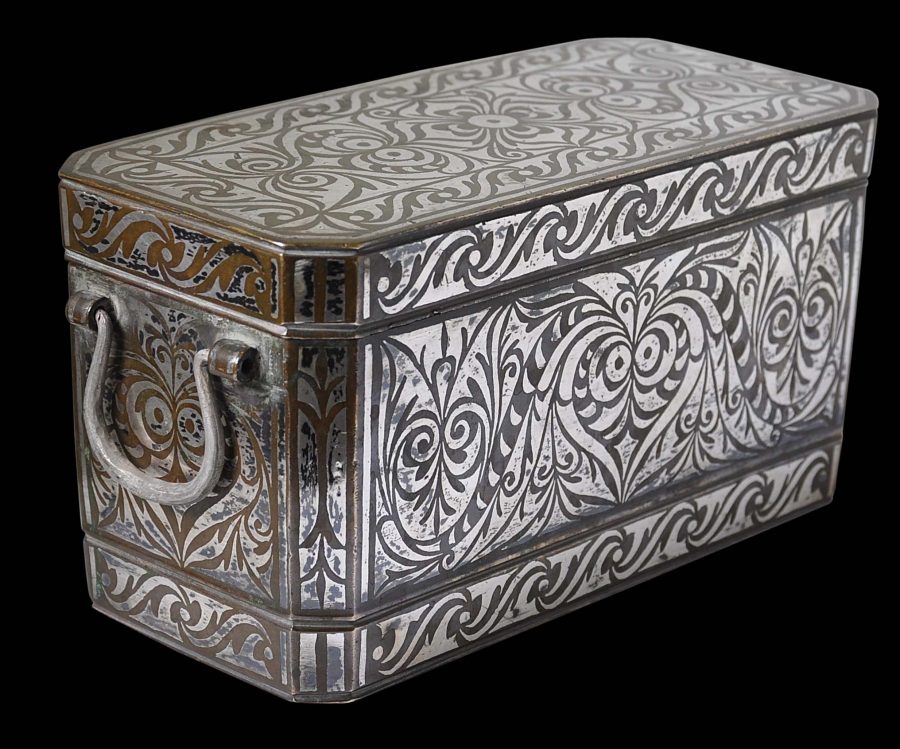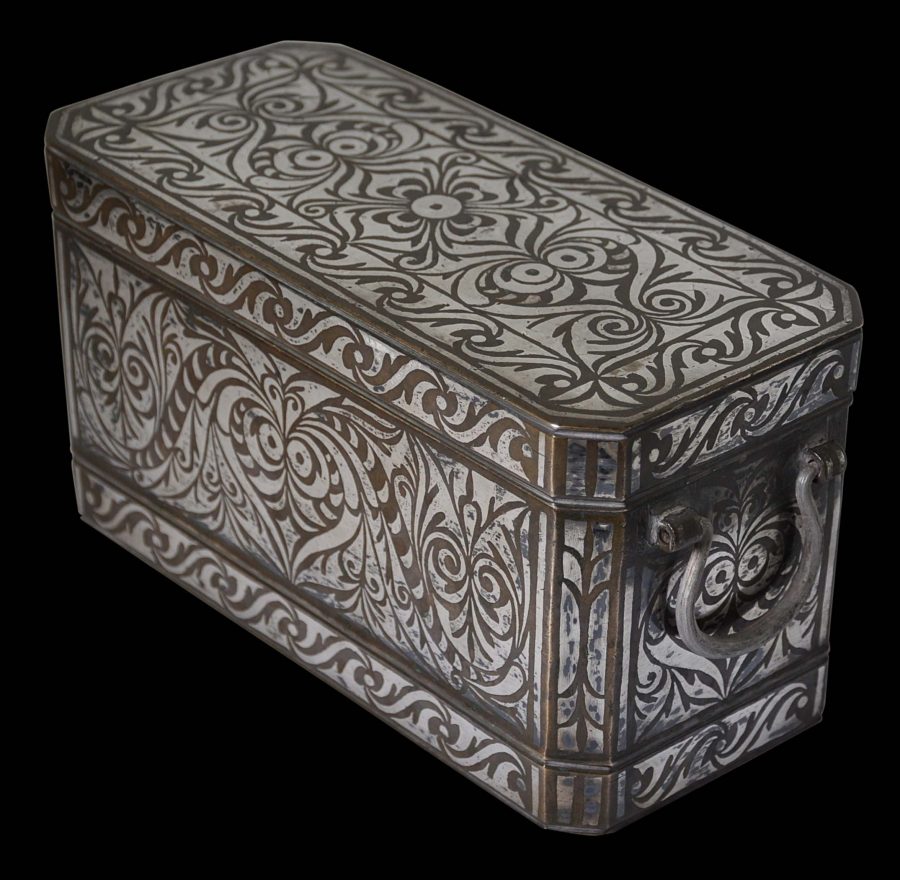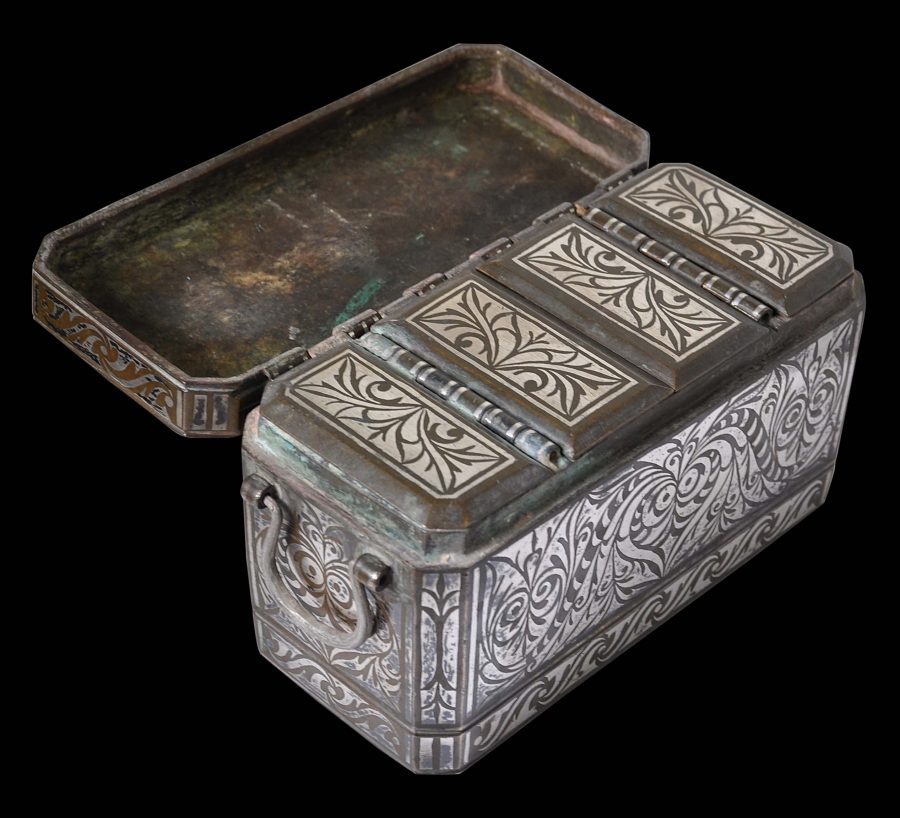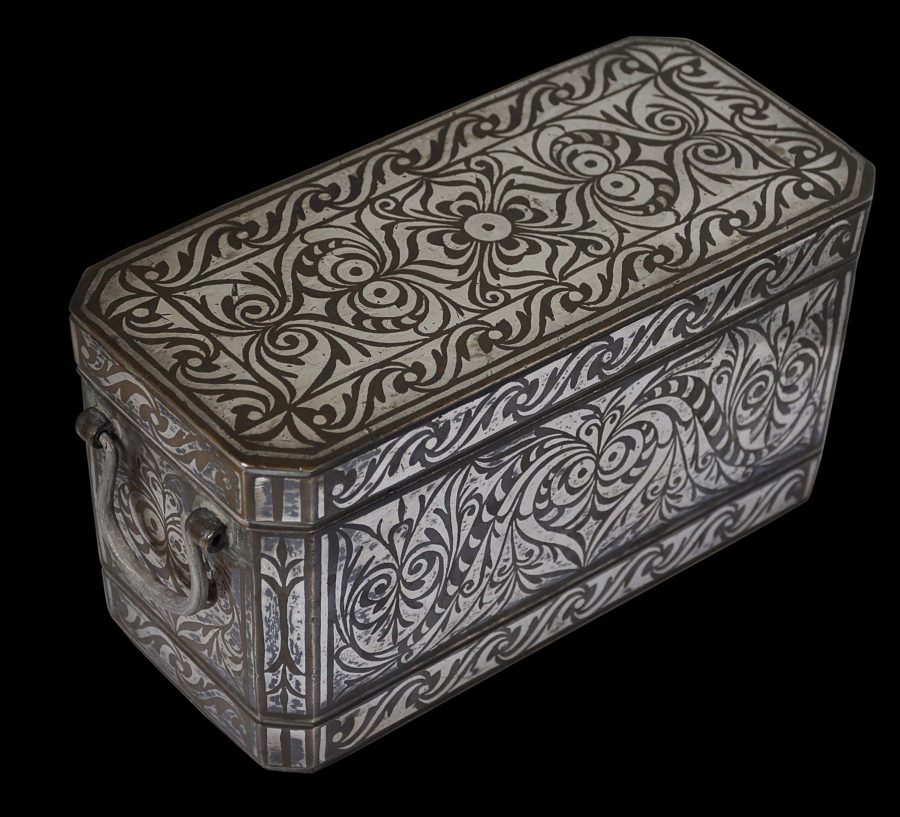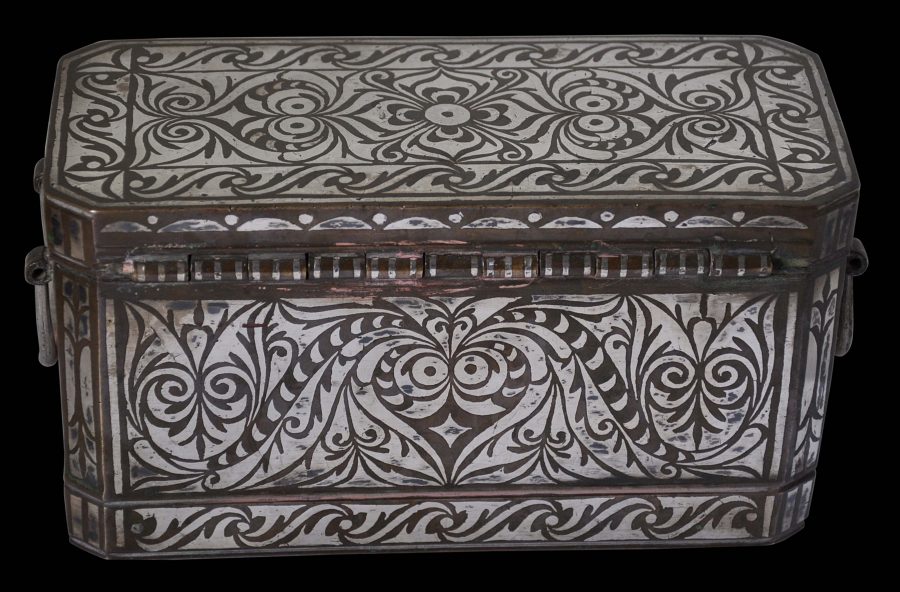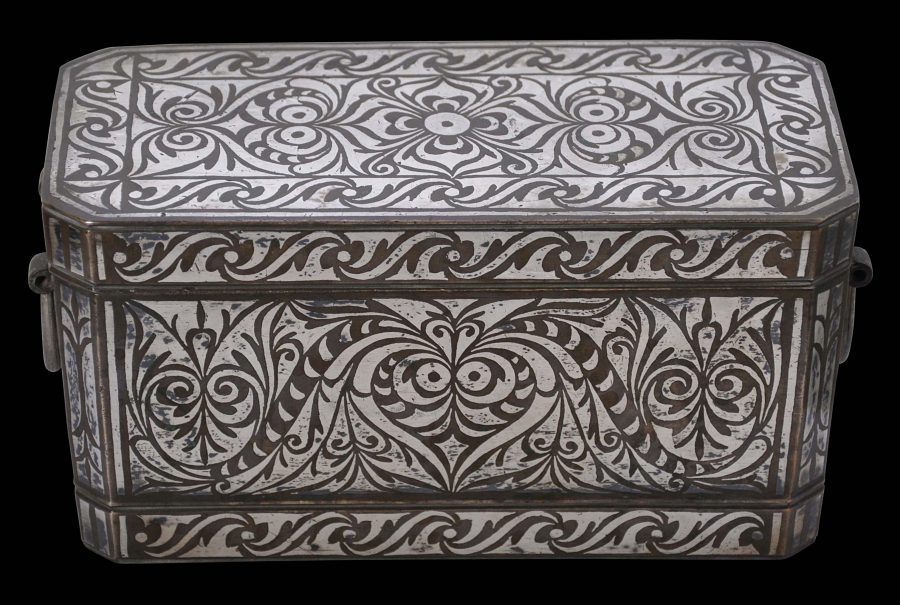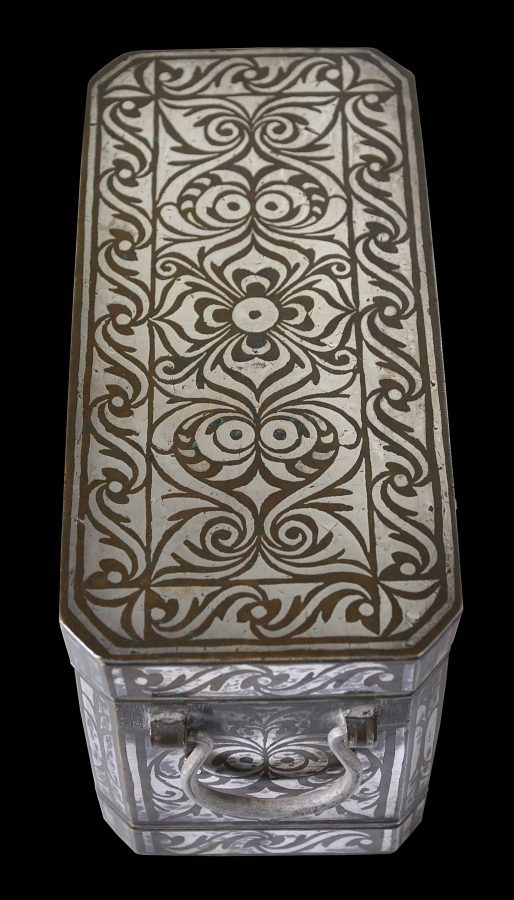Enquiry about object: 2998
Mindanao Silver-Inlaid Brass Betel Box (Lutuan)
Islamic Mindanao, Philippines early 20th century
length: 20.7cm, height: 10.8cm, depth: 9.6cm, weight: 2,873g
Provenance
UK art market
Betel chewing was prevalent in the southern Philippines as in much of the rest of Southeast Asia. Wealthier Maranao families on Mindanao were able to afford elaborate silver-inlaid brass betel boxes such as this larger-than-usual example. Such boxes were used to show off to household visitors and from which they were offered betel and the other components such as leaves and lime used to make up the betel quid.
The box comprises an outer hinged lid and handles, and several inner lidded compartments.
The outer box and interior lids are decorated with silver inlay with motifs that most probably represent the stylised tail feathers of the sari-manok bird as well as orchid blooms, within borders that comprise the scrolling obid-obid (stylised rope) pattern.
Designs such as these are drawn from a local repertoire that has its origins in wood carving.
This lutuan represents a fine and large example of Islamic metalwork from the most eastern outreach of Islamic art and civilisation: Mindanao island being significantly further east than even China – artwork from Islamic Southeast Asia remains chronically under-represented in the world’s major collections of Islamic art. It is in excellent condition with no losses to the silverwork. Evidence of use remains inside the lidded chambers.
Smaller examples are illustrated in several books including Henkel et al (2009, p. 156). Lutuan tell an interesting story of the spread of Islam and Islamic crafts. The silver inlay work shown on this box originated in Syria. The function originated in India. But the craftsmen were based in the Islamic southern Philippines. Boxes of this type were then exported from the Philippines to other Islamic communities, most notably to Afghanistan and the Maghreb, where often, locals assumed that such boxes were locally made.
The example here is in fine condition. Losses to the silver inlay are age and use related. Overall, the box is of a good size and has a fine patina with obvious age.
References
Brownrigg, H., Betel Cutters from the Samuel Eilenberg Collection, Thames & Hudson, 1992.
Fraser-Lu, S., Silverware of South-East Asia, Oxford University Press, 1989.
Henkel, D. et al, Land of the Morning: The Philippines and its People, Asian Civilisations Museum, 2009.
Rooney, D.F., Betel Chewing Traditions in South-East Asia, Oxford University Press, 1993.


